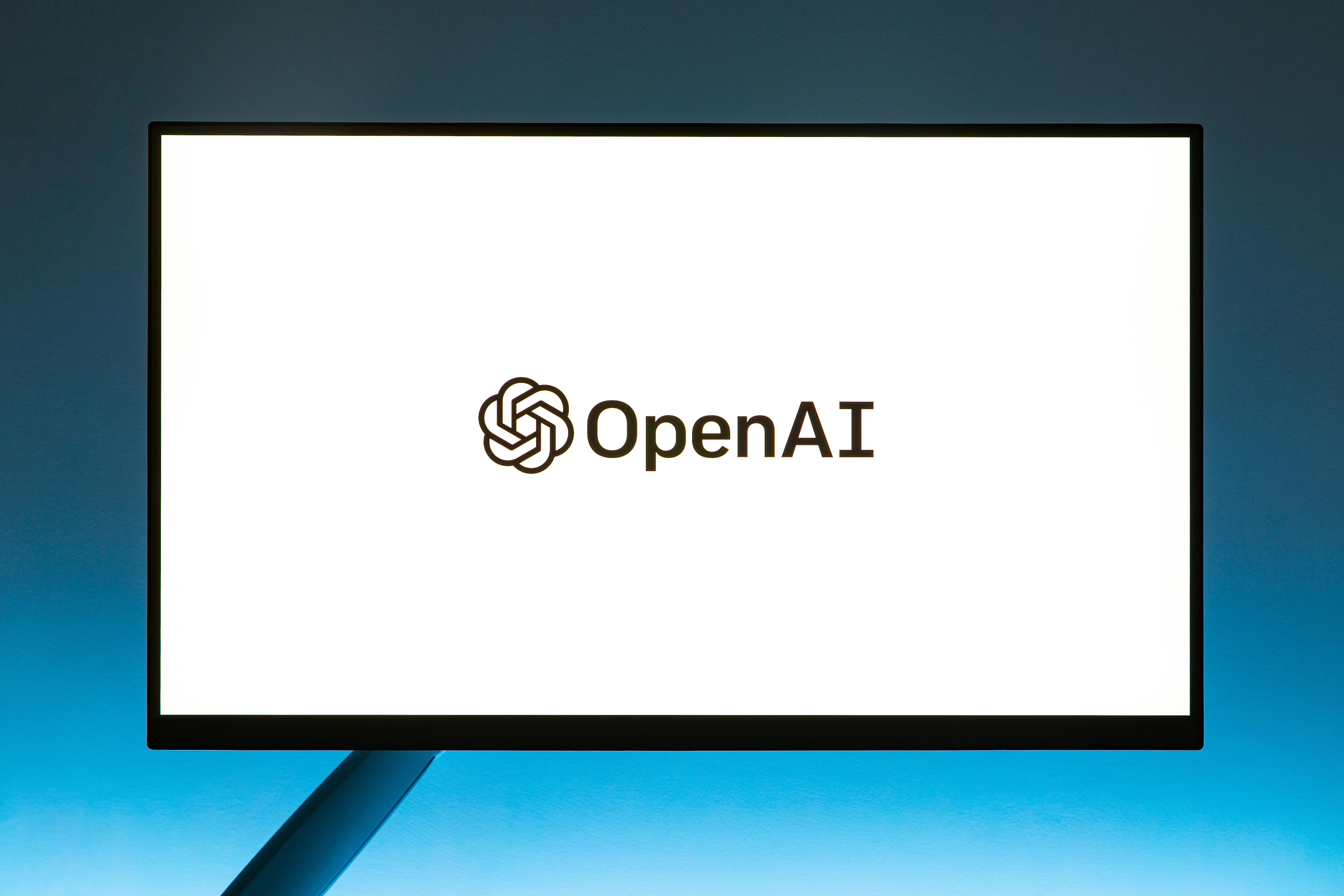Ready to discover how AI-powered chatbots can revolutionize your digital marketing efforts? In today’s fast-paced digital landscape, staying ahead is crucial. At EDigitalMarketers.com, we understand the importance of effective digital marketing strategies and how they can boost your online presence and drive real results. That’s why we’re excited to explore the world of AI-powered chatbots in digital marketing. With their advanced capabilities and 24/7 availability, chatbots have the potential to revolutionize customer interactions, streamline processes, and personalize user experiences. So, let’s dive in and uncover the endless possibilities that AI-powered chatbots can bring to your digital marketing game.

Understanding Chatbots
What are chatbots?
Chatbots are computer programs designed to simulate conversational interactions with humans. They are powered by artificial intelligence (AI) and are programmed to understand natural language and respond intelligently. Chatbots can be implemented on various platforms, including websites, social media, and messaging applications.
History of chatbots
The concept of chatbots dates back to the mid-20th century, with the development of the first chatbot known as ELIZA in the 1960s. ELIZA was a simple program that could simulate conversations by using pattern recognition and pre-programmed responses.
Over the years, chatbots have evolved significantly, thanks to advancements in AI technologies. Today, chatbots utilize natural language processing, machine learning, and data analysis to provide more accurate and sophisticated responses.
Importance of chatbots in digital marketing
Chatbots play a crucial role in digital marketing by enhancing customer engagement, improving user experience, and streamlining business operations. They enable businesses to provide instant customer support, drive lead generation, and deliver personalized recommendations.
Furthermore, chatbots contribute to cost savings by reducing the need for human resources and automating repetitive tasks. With their ability to understand and respond to natural language, chatbots offer a convenient and efficient way for businesses to interact with their customers.
Benefits of AI-Powered Chatbots
Improved customer service
One of the key benefits of AI-powered chatbots is their ability to provide improved customer service. Chatbots are available 24/7 and can quickly address customer inquiries and concerns. They can handle multiple conversations simultaneously, ensuring prompt and efficient responses.
By utilizing AI technologies, chatbots can analyze customer queries and provide accurate and relevant information. They can also learn from past interactions to improve their responses over time, leading to a more personalized and satisfying customer experience.
24/7 availability
Unlike human customer service agents who have limited working hours, AI-powered chatbots are available round the clock. This makes them an ideal tool for businesses that operate globally or cater to customers in different time zones.
Customers can engage with chatbots at any time, whether they need assistance during non-business hours or have urgent inquiries outside of regular support hours. This constant availability helps businesses maintain a high level of customer satisfaction and prevent potential revenue loss.
Cost savings
Implementing AI-powered chatbots can lead to significant cost savings for businesses. By automating customer support and other repetitive tasks, companies can reduce the need for a large customer service team. This results in lower labor costs and increased operational efficiency.
Moreover, chatbots can handle a large volume of inquiries simultaneously, eliminating the need for customers to wait in long queues or hold on the phone. This not only saves time for customers but also lowers staffing requirements for businesses.
Efficient lead generation
Chatbots can also play a crucial role in lead generation for businesses. By engaging with website visitors or social media users, chatbots can collect relevant information and qualify leads. They can ask targeted questions, capture contact details, and provide personalized recommendations based on user preferences.
AI-powered chatbots can analyze customer data and behavior to identify potential leads and segment them for further marketing efforts. This enables businesses to streamline their lead generation process and focus on high-quality prospects, ultimately improving conversion rates.
Personalized user experience
One of the key advantages of AI-powered chatbots is their ability to deliver a personalized user experience. By analyzing user data and preferences, chatbots can tailor their responses and recommendations to individual customers.
Chatbots can recognize returning customers and provide personalized greetings or offer suggestions based on their previous interactions. This level of personalization makes customers feel valued and enhances their overall experience with the brand.

How AI-Powered Chatbots Work
Natural language processing
Natural language processing (NLP) is a key component of AI-powered chatbots. It enables chatbots to understand and interpret human language, including spoken and written words, in order to generate appropriate responses.
NLP involves techniques such as text analysis, sentiment analysis, and language modeling. Through these techniques, chatbots can extract meaning, context, and intent from user messages and formulate relevant replies.
Machine learning
Machine learning is another crucial aspect of AI-powered chatbots. It allows chatbots to learn from previous interactions and improve their performance over time.
By analyzing large datasets and using algorithms, chatbots can identify patterns, make predictions, and continuously refine their responses. Machine learning enables chatbots to adapt to new or unseen situations and deliver more accurate and contextually appropriate answers.
Data analysis
Data analysis plays a vital role in enhancing the capabilities of AI-powered chatbots. Chatbots collect and analyze vast amounts of data, including user preferences, behavior patterns, and interaction history.
By leveraging data analysis techniques such as clustering, classification, and predictive modeling, chatbots can gain insights into user needs and preferences. This enables them to deliver personalized recommendations, target specific customer segments, and improve overall user satisfaction.
Integration with CRM systems
Integrating chatbots with customer relationship management (CRM) systems is essential for businesses to streamline their operations and provide a seamless customer experience.
By integrating with CRM systems, chatbots can access customer information, including purchase history, preferences, and previous interactions. This allows chatbots to offer personalized recommendations, provide accurate product information, and resolve customer issues more efficiently.
Chatbot training and learning
Training and learning are ongoing processes for AI-powered chatbots. Chatbot developers continuously monitor and analyze chatbot performance, gathering feedback from users and making necessary improvements.
By regularly updating chatbot algorithms and training data, developers can enhance chatbot accuracy, improve response times, and ensure that chatbots meet evolving customer needs. This iterative process helps chatbots become more effective and reliable over time.
Use Cases of AI-Powered Chatbots in Digital Marketing
Customer support and assistance
One of the primary use cases of AI-powered chatbots in digital marketing is providing customer support and assistance. Chatbots can handle customer inquiries, provide product information, and assist with common issues or troubleshooting steps.
By offering instant support, chatbots reduce customer frustration and improve satisfaction levels. They can also escalate complex issues to human agents when necessary, ensuring a seamless transition between chatbot and human support.
Lead generation and qualification
AI-powered chatbots are valuable tools for lead generation. By engaging with website visitors or social media users, chatbots can capture relevant customer information, such as contact details and preferences.
Chatbots can qualify leads by asking targeted questions and analyzing responses. This helps businesses identify high-potential prospects and streamline their lead nurturing process.
Personalized recommendations
Chatbots excel at delivering personalized recommendations to customers. By analyzing user data and behavior, chatbots can suggest products or services that align with individual preferences and needs.
Through personalized recommendations, chatbots enhance the user experience, increase engagement, and drive conversions. They can also upsell or cross-sell relevant products, ultimately increasing customer lifetime value.
Interactive content delivery
Chatbots are effective in delivering interactive content to users. They can engage users through quizzes, surveys, or interactive games, providing an immersive and entertaining experience.
By delivering interactive content, chatbots capture user attention and encourage longer engagement with the brand. This helps businesses build brand awareness, gather valuable insights, and foster a stronger connection with their target audience.
Sales and conversions optimization
AI-powered chatbots can act as virtual sales assistants, guiding users through the sales process and optimizing conversions. They can answer product-related questions, provide pricing information, and assist with the purchase decision.
Chatbots can offer personalized discounts, recommend related products, and address customer concerns, thereby increasing the likelihood of a successful sale. By optimizing the sales process, businesses can drive revenue growth and maximize their return on investment.

Implementing AI-Powered Chatbots
Choosing the right chatbot platform
When implementing AI-powered chatbots, it is crucial to choose the right chatbot platform that aligns with business requirements. Factors to consider include ease of integration, scalability, customizability, and available features.
Businesses should evaluate different platforms based on their specific needs and select a platform that offers the desired functionality and capabilities. It is also important to consider the platform’s compatibility with existing systems and its ability to integrate with CRM and other relevant tools.
Defining chatbot goals and objectives
Before implementing a chatbot, businesses should clearly define their goals and objectives. This involves determining the purpose of the chatbot, such as providing customer support, generating leads, or increasing sales.
By clearly defining goals and objectives, businesses can develop a chatbot strategy that aligns with their broader marketing and business objectives. This ensures that the chatbot is designed and trained to deliver the desired outcomes.
Creating chatbot conversation flows
Creating effective chatbot conversation flows is crucial for delivering a seamless user experience. The conversation flow should be intuitive and easy to follow, ensuring that users can navigate through the chatbot without confusion.
Businesses should anticipate different user queries and formulate appropriate responses. It is also important to consider potential user paths and design conversational branches accordingly.
Integrating chatbots with existing systems
To leverage the full potential of chatbots, it is essential to integrate them with existing systems and tools. Integration with CRM systems allows chatbots to access and utilize customer data effectively.
Integration with other marketing tools, such as email marketing platforms or analytics tools, enables chatbots to deliver personalized recommendations and track user interactions. This integration ensures a cohesive and seamless experience for users across different touchpoints.
Testing and optimizing chatbot performance
Once the chatbot is implemented, it is important to regularly test and optimize its performance. This involves analyzing user feedback, monitoring chatbot metrics, and making necessary adjustments to improve its effectiveness.
Businesses should gather data on user satisfaction, response accuracy, and conversion rates to evaluate the chatbot’s performance. Based on these insights, adjustments can be made to refine the chatbot’s responses, enhance its natural language processing, and ensure a smooth user experience.
Best Practices for AI-Powered Chatbots
Simplify user interactions
To deliver a user-friendly experience, it is important to simplify user interactions with chatbots. Complex or ambiguous questions can confuse users and lead to frustration. Clear and concise questions help users understand what is expected of them and provide accurate responses.
Using simple and conversational language in chatbot prompts and messages helps create a more human-like interaction. Avoiding technical jargon and providing options for users to choose from can further simplify the conversation.
Provide clear instructions
Clear instructions are essential for users to understand how to interact with the chatbot effectively. Clearly explaining the chatbot’s capabilities, limitations, and available options helps set the right user expectations.
Additionally, providing instructions or suggestions on how to phrase questions or provide information can guide users and improve the accuracy of chatbot responses. Well-defined instructions reduce the chances of misinterpretation and ensure a smoother user experience.
Offer multiple language support
To cater to a wider audience, it is beneficial to offer multiple language support in chatbots. This allows users to interact with the chatbot in their preferred language, enhancing user engagement and satisfaction.
Implementing natural language processing capabilities in different languages enables chatbots to understand and respond to user queries accurately. Providing language options during the conversation or utilizing language detection techniques can make the chatbot experience more inclusive.
Integrate with live agents
Although chatbots are designed to handle a wide range of inquiries, there are instances where human intervention is necessary. Integrating chatbots with live agents ensures a seamless transition between the two, enhancing the customer experience.
When a chatbot encounters a complex query or a frustrated customer, it can seamlessly transfer the conversation to a live agent. This allows for personalized assistance and ensures that customers receive the support they need, even if it goes beyond the scope of the chatbot’s capabilities.
Regularly analyze and update
Continuous analysis and updates are crucial for maintaining the effectiveness of AI-powered chatbots. Regularly analyzing chatbot performance metrics and user feedback helps identify areas for improvement and optimize the chatbot’s responses.
Updating the chatbot’s training data and algorithms based on new user queries and trends enables it to learn and adapt over time. This ensures that the chatbot remains up to date and provides accurate and relevant responses to users.
Challenges of AI-Powered Chatbots
Accuracy of responses
While AI-powered chatbots have made significant advancements in understanding natural language, there is still a challenge in accurately interpreting and responding to complex or ambiguous queries. Ensuring that chatbots provide accurate and relevant answers is crucial to enhancing user satisfaction.
To address this challenge, it is important to regularly train and update chatbots with new data and use advanced language processing techniques to improve the accuracy of responses.
Handling complex queries
Another challenge for AI-powered chatbots is handling complex queries that require in-depth knowledge or expertise. Chatbots may struggle to provide satisfactory responses when confronted with highly technical or specialized questions.
Integrating chatbots with knowledge bases, FAQs, or expert systems can help address this challenge. By accessing relevant information and expertise, chatbots can provide more comprehensive and accurate answers to complex queries.
Natural language understanding
Understanding natural language is a complex task for chatbots, as language can be ambiguous, context-dependent, and subject to cultural nuances. Chatbots may misinterpret user intent, leading to inaccurate or irrelevant responses.
Improving natural language understanding requires ongoing training and fine-tuning of chatbot algorithms. Utilizing data analysis techniques and user feedback can help refine the chatbot’s ability to interpret and respond to natural language.
Data privacy and security
AI-powered chatbots rely on data collection and analysis to deliver personalized experiences. However, this raises concerns about data privacy and security.
It is important for businesses to implement robust data protection measures and adhere to privacy regulations. This involves obtaining user consent, securely storing and handling user data, and ensuring that chatbots do not share sensitive information without proper authorization.
User acceptance and trust
Adopting chatbots can be met with skepticism and resistance from some users. Building user acceptance and trust is crucial for successful chatbot implementation.
To overcome this challenge, it is important to educate users about the benefits and capabilities of chatbots. Transparently communicating the purpose of chatbots, addressing security concerns, and showcasing their ability to deliver personalized experiences can help build user trust.
Future Trends of AI-Powered Chatbots
Advancements in natural language processing
Advancements in natural language processing will continue to enhance the accuracy and effectiveness of AI-powered chatbots. Improved language understanding, sentiment analysis, and context recognition will enable chatbots to engage in more sophisticated and meaningful conversations with users.
Integration with voice assistants
The integration of chatbots with voice assistants, such as Siri or Alexa, will become increasingly prevalent. This enables users to interact with chatbots through voice commands, providing a more natural and convenient user experience.
By leveraging voice recognition technologies, chatbots can understand spoken language and respond accordingly. This integration opens up new possibilities for chatbot applications in smart home devices and other voice-controlled systems.
Emotional intelligence
Chatbots with emotional intelligence capabilities will become more common in the future. These chatbots will be able to recognize and respond to user emotions, enhancing the overall user experience.
By analyzing user sentiment, voice tone, and facial expressions, emotional chatbots can tailor their responses based on the user’s emotional state. This personalized approach fosters stronger connections between users and chatbots, leading to higher engagement and satisfaction.
Customization and personalization
AI-powered chatbots will continue to evolve in their ability to deliver highly customized and personalized experiences. By analyzing user data and behavior, chatbots can offer recommendations, content, and interactions that are tailored to individual preferences and needs.
Personalized chatbot interactions create a more engaging and relevant experience for users, increasing the likelihood of conversion and repeat business. Business intelligence and data analysis will play a vital role in optimizing chatbot personalization capabilities.
Chatbots in social media marketing
The integration of chatbots in social media platforms will become increasingly prevalent. Chatbots can engage with users directly through messaging apps, providing instant support, personalized recommendations, and interactive content.
By leveraging the large and active user bases of social media platforms, businesses can enhance their marketing efforts and drive engagement. Chatbots can deliver targeted advertisements, offer exclusive promotions, and gather valuable customer insights.
Ethical Considerations
Transparency in chatbot interactions
Transparency is crucial in chatbot interactions to ensure that users are aware they are conversing with a chatbot and not a human. Businesses should clearly indicate that the user is engaging with a chatbot and provide information on its capabilities and limitations.
This transparency builds trust and allows users to adjust their expectations accordingly. Users should have the option to contact a human representative if they prefer or if the chatbot is unable to meet their needs.
Avoiding biases and discrimination
AI-powered chatbots must be designed and trained to avoid biases and discrimination. Prejudices, stereotypes, or biased behaviors should not be present in the chatbot’s responses or recommendations.
Businesses should continuously evaluate and monitor chatbot performance to ensure fairness and non-discrimination. Training data should be diverse and representative to avoid perpetuating biases or favoritism.
Respecting user privacy
Respecting user privacy is paramount when implementing AI-powered chatbots. Businesses should clearly communicate their data collection and usage practices and obtain user consent.
It is important to handle user data securely, protect it from unauthorized access, and adhere to privacy regulations. Anonymizing or pseudonymizing user data whenever possible can help mitigate privacy concerns.
Protecting against malicious use
AI-powered chatbots can be vulnerable to malicious use, such as spamming, phishing, or spreading misinformation. Businesses should implement security measures to protect chatbots from exploitation.
Regular monitoring of chatbot interactions and implementing security protocols can help detect and prevent malicious activities. Additionally, educating users on how to identify and report suspicious chatbot interactions can contribute to a safer digital environment.
Mitigating job displacement concerns
AI-powered chatbots have the potential to automate certain tasks, raising concerns about job displacement. It is important for businesses to address these concerns and ensure that chatbots complement human roles rather than replacing them.
By clearly defining the role of chatbots and highlighting their ability to enhance productivity and customer satisfaction, businesses can alleviate job displacement concerns. It may also be necessary to provide training and upskilling opportunities for employees affected by chatbot implementation.
Conclusion
AI-powered chatbots have become valuable tools in digital marketing, enabling businesses to enhance customer service, drive lead generation, and deliver personalized experiences. Through natural language processing, machine learning, and data analysis, chatbots can understand and respond intelligently to user queries.
The benefits of AI-powered chatbots include improved customer service, 24/7 availability, cost savings, efficient lead generation, and personalized user experience. Implementing chatbots involves choosing the right platform, defining goals, creating conversation flows, integrating with existing systems, and regularly testing and optimizing performance.
To ensure chatbot success, businesses should follow best practices such as simplifying user interactions, providing clear instructions, offering multiple language support, integrating with live agents, and regularly analyzing and updating. However, challenges such as accuracy, handling complex queries, natural language understanding, data privacy and security, and user acceptance need to be addressed.
Looking towards the future, advancements in natural language processing, integration with voice assistants, emotional intelligence, customization and personalization, and chatbots in social media marketing will shape the evolution of AI-powered chatbots. Ethical considerations, including transparency, avoiding biases, respecting user privacy, protecting against malicious use, and mitigating job displacement concerns, are essential for responsible chatbot implementation.
Overall, AI-powered chatbots offer significant opportunities for businesses to enhance their digital marketing strategies and deliver superior customer experiences. By embracing this technology and following best practices, businesses can stay ahead in the evolving digital landscape.



